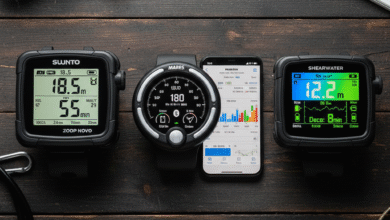Don’t Get Denied: Your A-Z Guide to Stress-Free Travel Documents
From understanding visa policies to renewing your passport, here's everything you need to know to ensure a smooth journey.
The bags are packed, the itinerary is set, and the excitement is building. But before you can post that first vacation photo, there’s one critical step that many travelers overlook until the last minute: documentation. A simple mistake here—an expired passport, a missed visa—can derail your entire trip and cost you a fortune. This guide will walk you through the essential paperwork to keep you on the right side of border control.
Part 1: The Golden Rule of Passports: Validity is Everything
Your passport is your key to the world, but not all passports are created equal. The most common and easily avoidable travel blunder is having a passport with insufficient validity.
- The 6-Month Rule: Most countries require your passport to be valid for at least six months from your date of departure from that country. For example, if you plan to leave a country on December 1st, your passport should be valid until at least June 1st of the following year. A friend of mine learned this the hard way when they were denied boarding a flight to Thailand because their passport was set to expire in four months. The airline was simply following the rules, and my friend was stuck at the gate, missing their trip.
- A Simple Checklist for Passport Renewal:
- Check the expiration date: Do this the moment you book your flight, not the week before.
- Allow plenty of time: The processing time for a new passport can take weeks or even months, especially during peak travel seasons. Don’t leave it to the last minute!
- Gather your documents: Check your government’s official passport website for a list of required documents, which often includes your old passport, a completed application form, and new passport photos.
- Update your bookings: Once you receive your new passport, remember to update any future flight or hotel reservations that were booked under your old passport number.
Part 2: Navigating the Maze of Visa Requirements
Visas can be the most confusing part of international travel. A visa is an official document (or electronic authorization) that grants you permission to enter a country. The type of visa you need depends on your nationality, your destination, and the purpose of your trip.
- Do Your Homework (Early!): The only reliable source for visa information is the official embassy or consulate of the country you plan to visit. Websites and travel blogs (including this one!) can provide general guidance, but visa policies change frequently. I was planning a trip to Brazil and initially thought a visa was required, but a quick check on the official consulate website confirmed that for my nationality, a visa was not needed for a short tourist stay.
- Types of Visas to Look Out For:
- Visa-Free/Visa Waiver: Lucky you! This means you can enter a country with just your passport. Examples include the Schengen Area for many nationalities.
- Visa on Arrival: You get this at the border crossing or airport upon entry. Be prepared to show documentation (like a return ticket) and pay a fee.
- e-Visa/Electronic Travel Authorization (ETA): This is an electronic visa that you apply for and receive online before you travel. It’s often linked to your passport number. The upcoming ETIAS for Europe is a perfect example of this.
- Physical Visa: This requires you to apply in person or by mail at a consulate and have a physical visa sticker placed in your passport. This process can take a long time and is often the most complex.
Part 3: Understanding Travel Insurance: Your Financial Safety Net
Travel insurance is not a luxury—it’s a critical safety net for when things go wrong. A medical emergency abroad can cost tens of thousands of dollars, and lost luggage or a cancelled flight can wipe out your travel budget.
- Beyond the Basics: What to Look For in a Policy:
- Medical Coverage: This is the most important part. Ensure your policy covers overseas medical emergencies, including hospitalization and emergency medical evacuation. Be honest about any pre-existing medical conditions when you apply, as failure to do so could void your entire claim.
- Trip Cancellation/Interruption: This covers non-refundable costs if your trip is cancelled or cut short due to unforeseen circumstances, like a family emergency or a natural disaster.
- Baggage and Personal Items: Look for coverage for lost, stolen, or damaged luggage. My sister once had her luggage delayed for three days in Iceland. Her travel insurance covered the cost of new clothes and toiletries, turning a frustrating situation into a minor inconvenience.
- Read the Fine Print: Not all policies are the same. Look for specific exclusions. For instance, some policies might not cover adventure sports like scuba diving or mountain climbing, while others may have a specific limit on coverage for expensive electronics. Don’t just pick the cheapest policy—choose the one that best fits your travel plans.
By taking the time to handle these three key areas of documentation, you can turn a potentially stressful experience into a seamless journey. After all, the fun part of travel begins when you confidently pass through immigration and step out into a new world.



